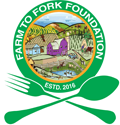Effect of stocking density and different feed on growth and survival of Mastacembelus armatus larvae
Keywords:
Mastacembelus armatus, Stocking density, Tubificid worm, Growth, SurvivalAbstract
The Spiny Eel, Mastacembelus armatus which is considered as endangered freshwater fish species deserves immediate attention for commercial scale seed production for farming. Although initial success on the artificial propagation has been achieved provision of suitable stocking density and feed are the bottlenecks in rearing larvae of this fish. Therefore, two experiments were conducted to assess the effects of stocking densities and different feed types on growth and survival of larvae of M. armatus. To determine appropriate stocking density, 10 days of old larvae of M. armatus were reared for 28 days in bowl system each with 10L capacity. Twelve bowls were divided into 4 treatments namely T-I (2 larvae/L), T- II (4 larvae/L), T-III (6 larvae/L), and T-IV (12 larvae/L) with 3 replications of each. Larvae were fed two times a day with chopped tubificid worms. The result showed significantly (P<0.05) better growth in terms of length gain (21.88±1.10 mm and 18.88±0.78 mm) and weight gain (86.30±1.59 mg and 84.95±0.94 mg), SGR (3.06±0.05 and 3.03±0.03), and survival rate (95.00±2.41% and 92.50±2.17%) in T-I and T-II, respectively compared to T-III and T-IV. For feeding trial, 6 trays were used and divided into 3 treatments namely T-I, T-II, and T-III having 2 replications for each and fed three different feeds, chopped tubificid worms, trash fish, and mega feed, respectively. Tubificid worms gave significantly (P<0.05) better result in terms of growth (length, 56.96±3.05 mm and weight, 326.65±12.27 mg), SGR (3.01±0.11), and survival rate (95.00±1.56%) over other feeds. From this study, it was found that stocking density at the rate of 4 larvae/L and tubificid worms as live feed are suitable for obtaining desirable level of growth performance and survival of M. armatus larvae/fry.
Downloads
Downloads
Published
How to Cite
Issue
Section
License
Copyright (c) 2017 by the author(s). This work is licensed under a Creative Commons.

This work is licensed under a Creative Commons Attribution-NonCommercial 4.0 International License.




















